#Joseph Dalton Hooker
Explore tagged Tumblr posts
Text
Tragic that Joseph Dalton Hooker isn't in the polar twinks poll. I mean, look at him:

(Chalk portrait by George Richmond, 1855. source)

(Daguerreotype by William Edward Kilburn, circa 1852. source)
#this is a bad post. sorry.#but also he's in his mid/late thirties in these imagine what he looked like in his early twenties on the ross expedition. just saying.#joseph dalton hooker
62 notes
·
View notes
Text
28th Thursday
Very fine. Sighted Land ahead in the Morning of a very lofty appearance and on approaching it discovered in the highest Peak of it a Volcanic erruption. It would Shew first with a volume of Smoke, as dark as Pitch which would gradually become of a lighter hue and then the Flame would burst forth with great fury for some time, after which it would Subside for a few minutes and then reappear again. The Island is of a great height Peaky and entirely covered with Snow except the Sides of the burning Mountain which [are] black which I suppose is owing to the hot Lava issuing from the mouth of the Cratur and falling down its Sides. There is a valley between the two highest Peaks, in which there is a dense Labyrinth of Smoke [which] presents a very romantic feature in the general view of the Island. It lays in about 77 S L. 174 E Longitude, and several other Islands in it vicinity; both Ships Kept away to Leeward of it and found a body of Ice adhering to it and running away in a Southerly direction as far as you could See. To look along it you would think it was a high wall built in the Ocean: I should think it was fifty feet high and looked grand in perspective. Sailing along it all night with Studding Sails Low & aloft. Night particularly fine Sun Shining Strong
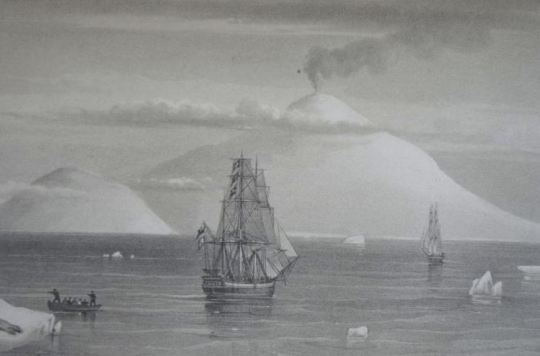
Beaufort Island and Mount Erebus, Discovered 28th. January, 1841, from Ross, Voyage, I. f.p.216.
Campbell's Notes:
Hooker, Notes, p. 271. ‘The water and the sky were both as blue, or rather more intensely blue than I have ever seen them in the tropics, and all the coast one mass of dazzlingly beautiful peaks of snow, which, when the sun approaches the horizon, reflected the most brilliant tints of golden, yellow and scarlet; and then to see the dark cloud of smoke, tinged with flame, rising from the volcano in a perfect unbroken column; one side jet-black, and the other giving back the colours of the sun, sometimes turning off at a right angle by some current of wind, and stretching many miles to leeward! This was a sight, so surpassing every thing that can be imagined, and so heightened by the consciousness that we have penetrated, under the guidance of our commander, into regions far beyond what was ever dreamed practicable, that it really caused a feeling of awe to steal over us, at the consideration of our own comparative insignificance and helplessness, and at the same time an indescribable feeling of the greatness of the Creator in the works of his hand.’Return to an Address of the Honourable The House of Commons dated 26 August 1841 - for, Copies of such Extracts from the Despatch of Captain James Ross from Van Diemen’s Land etc. ‘… Still steering to the southward, early next morning, the 28th, a mountain of 12,400 feet above the level of the sea was seen, emitting flame and smoke in splendid profusion. This magnificent volcano received the name of Mount Erebus… It is in latitude 77°32'S. and longitude 167°E.; an extinct crater to the eastward of Mount Erebus, of a somewhat less elevation, was called Mount Terror.
C. J. Sullivan, SPRI MS 367/22. ‘At the South East end of Mount Erebus and joining the Main Land of Victorias continent begins the Barrier or as I should call it natures handywork, in the evening we commenced running thinking from the Declination of the Barrier from the distant view from the Mast head that we may run it down by midnight. But as far and as fast as we run the Barrier appeard the Same Shape and form as it did when we left the mountain. We pursued a South Easterly Course for a distance of three hundred miles But the Barrier appeard the Same as when we Left the Land.’
7 notes
·
View notes
Video
n85_w1150 by Biodiversity Heritage Library Via Flickr: The rhododendrons of Sikkim-Himalaya :. London :Reeve, Benham, and Reeve,1849-51.. biodiversitylibrary.org/page/11630741
#1849#England#Ericaceae#Graphic media :#Hand colored#Himalaya Mountains#Lithograph#Plants#Rhododendron#Missouri Botanical Garden#Peter H. Raven Library#bhl:page=11630741#dc:identifier=http://biodiversitylibrary.org/page/11630741#JDHooker2017#artist:viaf=17306215#flickr#botanical illustration#scientific illustration#joseph Dalton hooker#rhododendron campylocarpum#cottagecore#flowercore
1 note
·
View note
Text
#2317 - Veronica hookeriana - Hooker's Speedwell


AKA Veronica olsenii, Parahebe hookeriana, and Parahebe olsenii.
Named after Sir Joseph Dalton Hooker (1817-1911) - a world famous botanist who travelled on the Ross Antarctic expedition of 1839 wrote “Handbook of New Zealand Flora” published in 1864-67 describing many specimens sent to Kew.
Endemic to the North Island, in open alpine areas including scree, fellfields where frost-thaw cycles uproot most plants, lavafields, banks, and rock outcrops.
Mount Ruapehu, North Island Volcanic Plateau, New Zealand
3 notes
·
View notes
Text
Birthdays 6.30
Beer Birthdays
Louis J. Hauck (1866)
Larry Berlin (1961)
Nick Funnell
Hildegard Van Ostaden (1975)
Five Favorite Birthdays
Bo Carter; blues musician (1892)
Stanley Clarke; jazz bassist (1951)
Susan Hayward; actor (1917)
Lena Horne; singer, actor (1917)
Brendan Perry; rock musician (1959)
Famous Birthdays
Florence Ballard; pop/soul singer (1943)
Robert Ballard; oceanographer (1942)
Fantasia Barrino; singer-songwriter and actress (1984)
Thomas Lovell Beddoes; English poet (1803)
Madge Bellamy; actress (1899)
Paul Berg; biologist (1926)
Harry Blackstone Jr.; magician (1934)
Brian Bloom; actor (1970)
Lizzy Caplan; actress (1982)
Murray Cook; singer, "Wiggles" (1960)
Man Mountain Dean; wrestler (1891)
Vincent D'Onofrio; actor (1959)
Georges Duhamel; French author (1884)
Nancy Dussault; actress and singer (1936)
John Gay; English writer (1685)
Alicia Fox; wrestler, model, and actress (1986)
Archibald Frazer-Nash; English car designer (1889)
David Garrison; actor (1952)
James Goldman; screenwriter and playwright (1927)
Winston Graham; English author (1908)
Rupert Graves; actor (1963)
David Alan Grier; actor (1955)
Larry Henley; singer-songwriter (1937)
Barry Hines; English author (1939)
Joseph Dalton Hooker; English botanist and explorer (1817)
Allan Houser; sculptor and painter (1914)
Mario Lanfranchi; Italian film director (1927)
Hal Lindes; American-English guitarist (1953)
Czesław Miłosz; Lithuanian writer (1911)
Kelsi Monroe; adult actress (1992)
Raymond Moody; parapsychologist (1944)
Tony Musante; actor (1936)
Clive Nolan; English musician (1961)
José Emilio Pacheco; Mexican poet (1939)
Brendan Perry; English singer-songwriter and guitarist (1959)
Michael Phelps; swimmer (1985)
Monica Potter; actor (1971)
Julianne Regan; English singer-songwriter and guitarist (1962)
Andy Scott; rock guitarist, singer (1949)
Harry Shields; jazz clarinetist (1899)
Glenn Shorrock; English-Australian singer-songwriter (1944)
Thomas Sowell; economist (1930)
Stanley Spencer; English artist (1891)
Mark Spoelstra; singer-songwriter and guitarist (1940)
Ron Swoboda; New York Mets OF (1944)
Eleanor Ross Taylor; poet (1920)
Mike Tyson; boxer (1966)
Dave Van Ronk; singer-songwriter and guitarist (1936)
Horace Vernet; French painter (1789)
Friedrich Theodor Vischer; German author, poet (1807)
Brian Vollmer; Canadian singer (1955)
Rich Vos; comedian (1957)
Heinz Warneke; German-American sculptor (1895)
Mark Waters; film director (1964)
Philip Adrian Wright; rock keyboardist (1956)
Ed Yost; hot-air balloon inventor (1919)
2 notes
·
View notes
Text

Emil Racoviţă. Now what Raco really excelled at drawing was ass and dick & balls, but he could draw a solid penguin when he wanted to. 7.5/10

Joseph Dalton Hooker. I’m gonna be honest I absolutely love this penguin. He’s so squat and mean. 8/10

Dennis G. Lillie. Seeing as this is a Wilson/Penguin hybrid I’m not sure it belongs here? But I love Lillie to pieces & all his caricatures are so good, & I love the fondness of “Our Bill.” So. ?/10
Antarctic explorers’ drawings of penguins
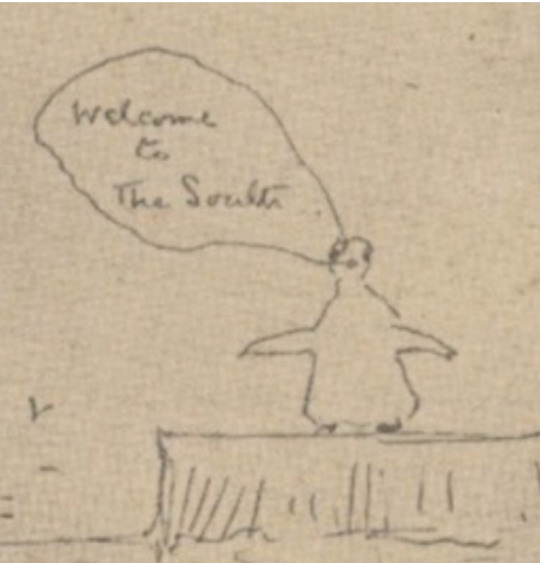
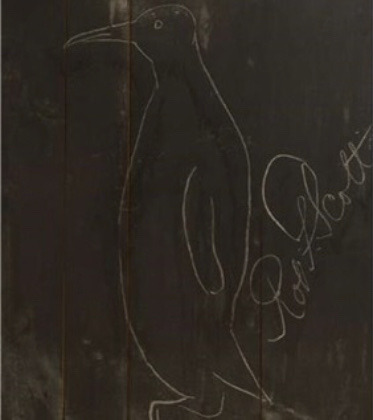
Robert Falcon Scott. Hilarious. 7/10 for the first one because he is so friendly, 5/10 for the second.
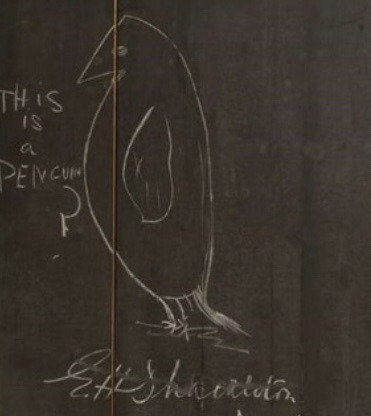
Ernest Shackleton. What an angular & compact little guy. 5/10
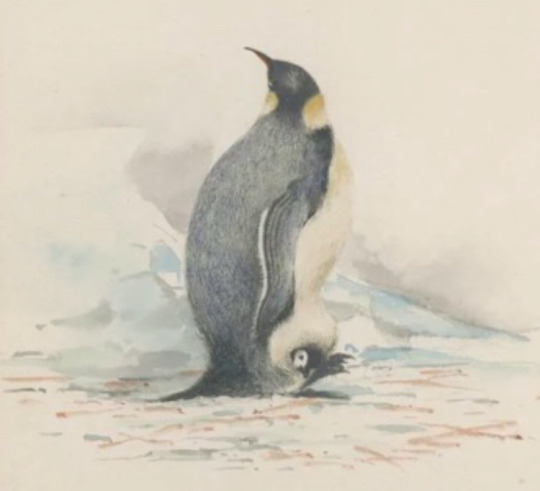
Edward Adrian Wilson. Shut the fuck up Bill, we know you’re an incredible artist. 10/10, obviously
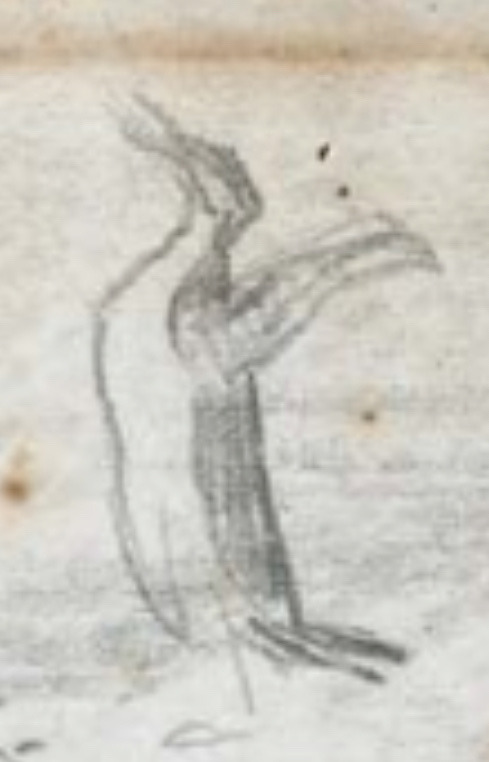
George Marston. I mean that’s a solid penguin right there. 8/10
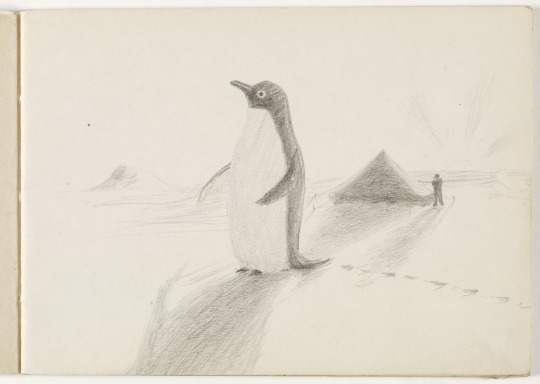
Frank Worsley. Oh Wuzzles…..the composition of this is stellar. Wuzzpeng you will always be famous 9/10.

Apsley Cherry-Garrard. The cutest thing I’ve ever seen in my life, every time I lay eyes on it I tear up. I fully acknowledge my bias but 11/10.
9K notes
·
View notes
Text
It is often said that all the conditions for the first production of a living organism are now present, which could ever have been present. But if (and oh! what a big if!) we could conceive in some warm little pond, with all sorts of ammonia and phosphoric salts, light, heat, electricity, &c., present, that a proteine compound was chemically formed ready to undergo stillmore complex changes, at the present day such matter would be instantly devoured or absorbed, which would not have been the case before living creatures were formed.
Charles Darwin in a letter to Joseph Dalton Hooker, 1 February 1871
0 notes
Text
A Journey Through the History of the Kanchenjunga Region
Introduction: The Kanchenjunga region, nestled in the eastern Himalayas, is renowned for its majestic peaks, rich biodiversity, and cultural heritage. Spanning across Nepal, India, and Bhutan, this region has a long and storied history shaped by indigenous communities, explorers, and mountaineers. Let's embark on a journey through the fascinating history of the Kanchenjunga region.

Early Settlements and Indigenous Cultures:
Ancient Inhabitants: The Kanchenjunga region has been inhabited for millennia by indigenous peoples such as the Limbu, Rai, Sherpa, and Lepcha communities. These resilient populations have adapted to the challenging mountain environment, practicing agriculture, herding, and trade along ancient routes.
Cultural Heritage: The region is rich in cultural heritage, with vibrant traditions, festivals, and folklore passed down through generations. The indigenous peoples have a deep spiritual connection to the land, reflected in their reverence for sacred mountains like Kanchenjunga, the third-highest peak in the world.
Exploration and Discovery:
Early Explorers: European explorers began venturing into the Kanchenjunga region in the 19th century, drawn by tales of uncharted territories and lofty peaks. British surveyors, including Joseph Dalton Hooker and Sir Francis Younghusband, conducted pioneering expeditions, mapping the terrain and documenting the flora and fauna.
First Ascents: The first recorded attempt to climb Kanchenjunga was made by a British team in 1905. Despite failing to reach the summit, subsequent expeditions in the 1950s and 1960s led to the first successful ascents. These feats marked a turning point in mountaineering history and sparked global interest in the Himalayas.
Conservation Efforts and Environmental Protection:
Establishment of Protected Areas: Recognizing the ecological significance of the Kanchenjunga region, governments in Nepal, India, and Bhutan have established protected areas and national parks to preserve its biodiversity. These include the Kanchenjunga Conservation Area in Nepal and the Khangchendzonga National Park in India, home to diverse species of flora and fauna.
Community-based Conservation: Conservation efforts in the Kanchenjunga region often involve collaboration with local communities, who play a vital role in sustainable resource management and ecotourism initiatives. Community-based homestays and trekking programs offer visitors an immersive experience while supporting local livelihoods.
Conclusion: The history of the Kanchenjunga region is a tapestry woven with threads of ancient cultures, intrepid exploration, and conservation endeavors. As we continue to discover its wonders, let us strive to preserve its natural beauty and cultural heritage for future generations to cherish and enjoy.
1 note
·
View note
Text
On nicknames
In Ross in the Antarctic, M.J. Ross quotes several of J.E. Davis’s letters to Joseph Dalton Hooker following the Antarctic expedition’s return to England, including one on James Clark Ross’s wedding: “I see by the papers that he [Ross] is married. I do not wish him any harm but I hope the future Lady R may prove a Dragon. Ditto to Richard and Quilp when they marry”. M.J. Ross suggests that “Richard and Quilp” were Edward Bird (with “Richard” potentially coming from dicky-bird) and either Francis Crozier or Archibald McMurdo.
However, looking at other letters from Davis to Hooker, it’s clear that “Richard” is Crozier. Davis alternately referred to him as Richard and Dick, as in a letter to Hooker dated May 12, 1845
I suppose you have been or will go down and visit the old ships before they start - I certainly should like to visit them with you - do you know if they have got any of the Old Officers except Honey? What has become of Moore? [T.E.L. Moore, mate on Terror during the Antarctic expedition] I should think he would like to accompany dear Dick again.
and another letter on June 26th
So the old ships are gone at last - I hope Dick will lead the life I wish him that is to say the same as it used to be.
As for Quilp, the letter above is the only time that nickname appears in Davis’s letters, but Davis appeared to share what seemed to be a generally low opinion of Bird among the expedition’s junior officers--he wrote to Hooker, “To think that Bird that did next to nothing should get two steps by the cruize and others to get nothing is shameful”--so it’s easy to speculate that Bird is the one being referred to as the villain of The Old Curiosity Shop. (Joseph Dayman and Henry Yule also disparaged Bird in their letters to Hooker)
[All letters from the Royal Botanic Gardens Kew Archives JDH/2/1/5]
#also while i'm criticizing m.j. ross he transcribes davis et al.'s nickname for jcr as 'jimmy' but it's clearly 'jemmy'#i really need a separate tag for the antarctic expedition don't i#francis crozier#edward bird#j.e. davis#joseph dalton hooker
14 notes
·
View notes
Text
10th Wednesday
Raining and blowing all Day. The appearance of Rocks is very Beautifull partially covered with Snow and displaying many Waterfalls Some 300 feet high. Shocking weather for the Observatories: working party ashore repairing the Mud Houses.
Campbell's Notes: Hooker records ‘… my rambles were generally solitary, through the wildest country I ever beheld. The hills were always covered with frozen snow, and many of my best Lichens and Mosses were obtained by hammering at the icy tufts, or sitting on them till they thawed.’ Hooker, Notes, pp. 262–3.
2 notes
·
View notes
Video
n224_w1150 by Biodiversity Heritage Library Via Flickr: Curtis's botanical magazine.. London ;New York [etc.] :Academic Press [etc.]. biodiversitylibrary.org/page/450798
#Periodicals#Pictorial works#Missouri Botanical Garden#Peter H. Raven Library#bhl:page=450798#dc:identifier=http://biodiversitylibrary.org/page/450798#artist:name=Matilda Smith#artist:VIAF=48272868#taxonomy:binomial=Passiflora capsularis#taxonomy:common=Passionflower#HSA#Joseph Dalton Hooker#JDHooker2017#geo:country=Brazil#taxonomy:common=red granadilla#BHLCurtis#editor:name=Joseph Dalton Hooker#WomeninScience#Matilda Smith#Q3299110#illustrator:wikidata=Q3299110#HerNaturalHistory#flickr#passionflower#passionfruit#passion flower#passion fruit#flower#flowers#botany
0 notes
Text
Sir John Ross's Expeditions:
First Voyage Vol I (contains Official orders and scientific goals in the intro - and the narrative) (includes the infamous Crocker Mountains)
First Voyage Vol II (containing the sciency appendix)
Second Voyage (Contains the usual scientific readings and the account of how they found the Mag North Pole) (lengthy but riveting)
Appendix of the Second Voyage (All the sciency stuff)
Sir Edward Parry's Expeditions
First Voyage (Includes the scientific appendix)
Second Voyage (Narrative only but does touch on some scientific researches)
Second Voyage Appendix (The sciency stuff)
Capt. Lyon (HMS Hecla) personal accounts of the Second Voyage (mostly narrative but he does discuss some of the science he did)
Third Voyage (Inc. Appendix. Some Science happening in chap III and IV)
Fourth Voyage to the North Pole (Incl. The Appendix)
Sir James Clark Ross's Expedition
Antarctica Vol I (God... for a man that had such trouble finishing this book... he sure did write a LOT... Sciency objectives mentionned in the Intro)
Antarctica Vol II (More narratives and some magnetism and Sciency Appendix)
Botany by Joseph Dalton Hooker (in Antarctica)
And I didn't delve into it but you also have all the personal accounts of the naturalists on board of those expedition to research (Sabine, Hooker, McCormick first come to mind...)
Franklin didn't have anything to show for after his Coppermine expedition :( but I admit that overland expeditions give less "idle time" for looking at compasses and stuff
Terror friends, does anyone have any info/resources/what have you on the kind of scientific experiments and research they would have been doing during the Franklin expedition? Or other Arctic/Antarctic expeditions as well. I know they were primarily heading out there to scout the Passage, but I also know there was some unrelated research going on and I’d love to know more
#this is now the post I shall refer to to find my friend the Narratives again#yeaaaaaah... those are half my open tabs...#sorry again for adding more stuff to your post#19th century dead... science?#19th century dead sailors
73 notes
·
View notes
Text
#2459 - Dracophyllum filifolium - Needle-leafed Grass Tree


Previously known as nine other species of Dracophyllum. The generic name means dragon-leaf and refers to the similarity of some species to the unrelated Dracaena. 'filifolium'refers to the very narrow foliage. They are sometimes called grass-trees but that common names is also applied to entirely unrelated plants in Australia. This species is sometimes called the turpentine shrub, because of its readiness to burn even when green.
A shrub or tree-sized Heath-family plant, up to 4m tall, endemic to the North, South, and Stewart Islands of New Zealand. Most common on mountain slopes, saddles, and ridges.
First described by Charles Darwin's closest friend, the botanist Joseph Dalton Hooker in 1853.
There are 61 species in the genus, of various sizes and forms, found across most of Australasia. Although dicotyledonous, they resemble primitive monocots with slender leaves concentrated in clumps at the ends of the branches.
Difficult to propagate - the minute seeds are wind-dispersed.
Mount Taranaki, New Zealand
1 note
·
View note
Photo










Illustrated title page and illustrations of rhododendrons taken from ‘The Rhododendrons of Sikkim-Himalaya’ by Joseph Dalton Hooker.
Published 1849 by Reeve, Benham, and Reeve.
http://www.biodiversitylibrary.org/permissions
archive.org
76 notes
·
View notes
Text
Birthdays 6.30
Beer Birthdays
Louis J. Hauck (1866)
Larry Berlin (1961)
Nick Funnell
Hildegard Van Ostaden (1975)
Five Favorite Birthdays
Bo Carter; blues musician (1892)
Stanley Clarke; jazz bassist (1951)
Susan Hayward; actor (1917)
Lena Horne; singer, actor (1917)
Brendan Perry; rock musician (1959)
Famous Birthdays
Florence Ballard; pop/soul singer (1943)
Robert Ballard; oceanographer (1942)
Fantasia Barrino; singer-songwriter and actress (1984)
Thomas Lovell Beddoes; English poet (1803)
Madge Bellamy; actress (1899)
Paul Berg; biologist (1926)
Harry Blackstone Jr.; magician (1934)
Brian Bloom; actor (1970)
Lizzy Caplan; actress (1982)
Murray Cook; singer, "Wiggles" (1960)
Man Mountain Dean; wrestler (1891)
Vincent D'Onofrio; actor (1959)
Georges Duhamel; French author (1884)
Nancy Dussault; actress and singer (1936)
John Gay; English writer (1685)
Alicia Fox; wrestler, model, and actress (1986)
Archibald Frazer-Nash; English car designer (1889)
David Garrison; actor (1952)
James Goldman; screenwriter and playwright (1927)
Winston Graham; English author (1908)
Rupert Graves; actor (1963)
David Alan Grier; actor (1955)
Larry Henley; singer-songwriter (1937)
Barry Hines; English author (1939)
Joseph Dalton Hooker; English botanist and explorer (1817)
Allan Houser; sculptor and painter (1914)
Mario Lanfranchi; Italian film director (1927)
Hal Lindes; American-English guitarist (1953)
Czesław Miłosz; Lithuanian writer (1911)
Kelsi Monroe; adult actress (1992)
Raymond Moody; parapsychologist (1944)
Tony Musante; actor (1936)
Clive Nolan; English musician (1961)
José Emilio Pacheco; Mexican poet (1939)
Brendan Perry; English singer-songwriter and guitarist (1959)
Michael Phelps; swimmer (1985)
Monica Potter; actor (1971)
Julianne Regan; English singer-songwriter and guitarist (1962)
Andy Scott; rock guitarist, singer (1949)
Harry Shields; jazz clarinetist (1899)
Glenn Shorrock; English-Australian singer-songwriter (1944)
Thomas Sowell; economist (1930)
Stanley Spencer; English artist (1891)
Mark Spoelstra; singer-songwriter and guitarist (1940)
Ron Swoboda; New York Mets OF (1944)
Eleanor Ross Taylor; poet (1920)
Mike Tyson; boxer (1966)
Dave Van Ronk; singer-songwriter and guitarist (1936)
Horace Vernet; French painter (1789)
Friedrich Theodor Vischer; German author, poet (1807)
Brian Vollmer; Canadian singer (1955)
Rich Vos; comedian (1957)
Heinz Warneke; German-American sculptor (1895)
Mark Waters; film director (1964)
Philip Adrian Wright; rock keyboardist (1956)
Ed Yost; hot-air balloon inventor (1919)
1 note
·
View note
Text

If you like freezing rain, iceberg derby and penguins, have we got an expedition for yooooou!
#francis crozier#james clark ross#joseph dalton hooker#mount erebus#erebus and terror#antarctica#history#jcr#by astrobleme
471 notes
·
View notes

